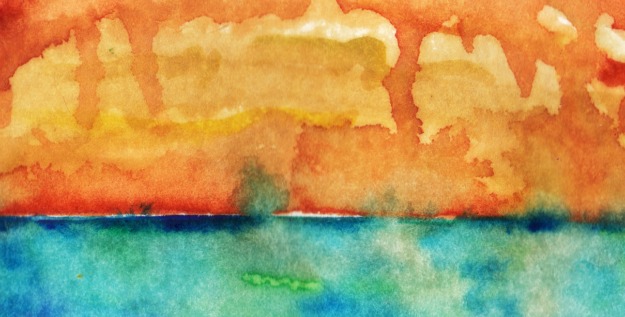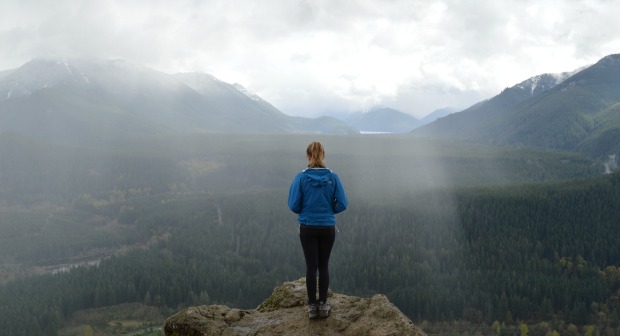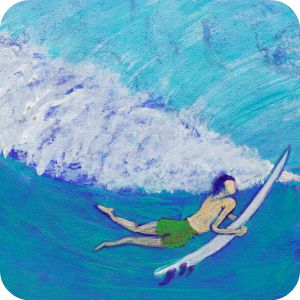I was leafing through a book by Thomas Leonard the other morning and a simple sentence leapt out at me:
“Own your awareness.”
There was something about those 3 words that grabbed my attention. The idea of ownership, when applied to awareness, is very powerful. Examine how most of your days play out, you might be surprised to see how much of each day is driven by unconscious, habitual responses.
To get a taste of what that looks like, think of a time where you have been driving and allowed your attention to wander, then realizing that you’d just driven a mile or two down the road and were unaware of that part of the trip.
Or being in conversation with someone and getting lost in a train of thought, then returning and realizing you’ve missed nearly everything they said. (Usually, right at the point where they look at you and say, “So, what do you think about that?”)
So, the call to ‘own’ your attention is striking. Sometimes when we try to be more present, or mindfully aware, it can seem like a struggle. But it’s useful to remember that we have that capacity to choose.
Awareness Is The Core Of Who We Are
I was employed as a youth worker for a number of years, and one year we took a group of young people on a caving trip. We were at a place called Jenolan Caves, an amazing series of underground caves carved out of limestone by the water flowing below ground.
Most of the underground trails leading through the caves were located beside the streams and pools of water that were still steadily carving out the limestone. I remember the beauty of those turquoise pools and how amazing it was to to explore these extensive waterways, so completely hidden underground
I think of awareness in the same way, as if it’s a beautiful body of water streaming underneath our life, constantly moving and shaping everything it touches.
These blue pools of awareness are often hidden from view by the busy-ness that we allow to invade us, by the ceaseless chatter in our minds, the deep habitual ruts we rely on to navigate our days. but they are always available for us to access.
Awareness Can’t Really Be Owned
While I like the urgency of Thomas’ direction: ‘Own your awareness’, the idea that awareness can be owned is not completely accurate.
Awareness is not an object we can take possession of, or control.
Awareness naturally springs out of us. (Or maybe we spring from it.)
Rather than owning our awareness, it might be useful to think in terms of aligning with it, of tuning into it.
This is a gentler approach, and one that sees awareness, not as an object we have to chase down and grab a hold of but, as a quality, a part of us that is always present, patiently waiting for our return.
How Do We Align With Awareness?
We become so used to being detached from our awareness that it becomes an almost novel experience to remain aware of ordinary experiences.
We live in a time where movies need multiple explosions and plot twists to hold our attention, where food has to be chemically altered so taste becomes extreme enough to register, where lives are crammed so full we don’t even notice the coffee or energy drink we’re chugging on our way to the next meeting.
It can feel like external events have the power to hijack our capacity for presence by continually placing us on high alert.
But we have a choice.
We sell our lives short when we buy into the idea that everything has to be extraordinary in order to earn our attention. The fact of being simply alive is miraculous enough that, when we choose to pay attention, we can never use up all the mystery and majesty of experiencing even the simplest things.
Like drinking a glass of water.
Or feeling your feet on the floor.
To explore that second example for a moment:
Stand up and give your attention to your own standing. What do you notice in your feet? What, if anything is happening in your knees? Do you feel any effects of your standing rippling out to even further parts of your body?
Even in the ordinary act of standing there is no limit to the depths we can explore.
So, while we can’t actually ‘own’ our awareness, we can claim the boldness of that statement, and make a choice to be more aware, and more consciously engaged with our awareness.
We can offer this awareness to ourselves, and to other people. We can lovingly guide it in ways that nourish and sustain us, and those around us. We can make regular contact with our awareness and watch as it moves through our lives, like a blue pool silently flowing, shaping us as it goes.



